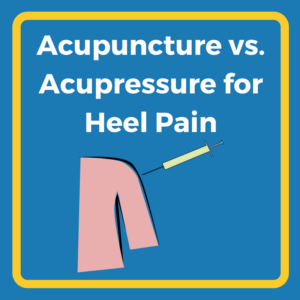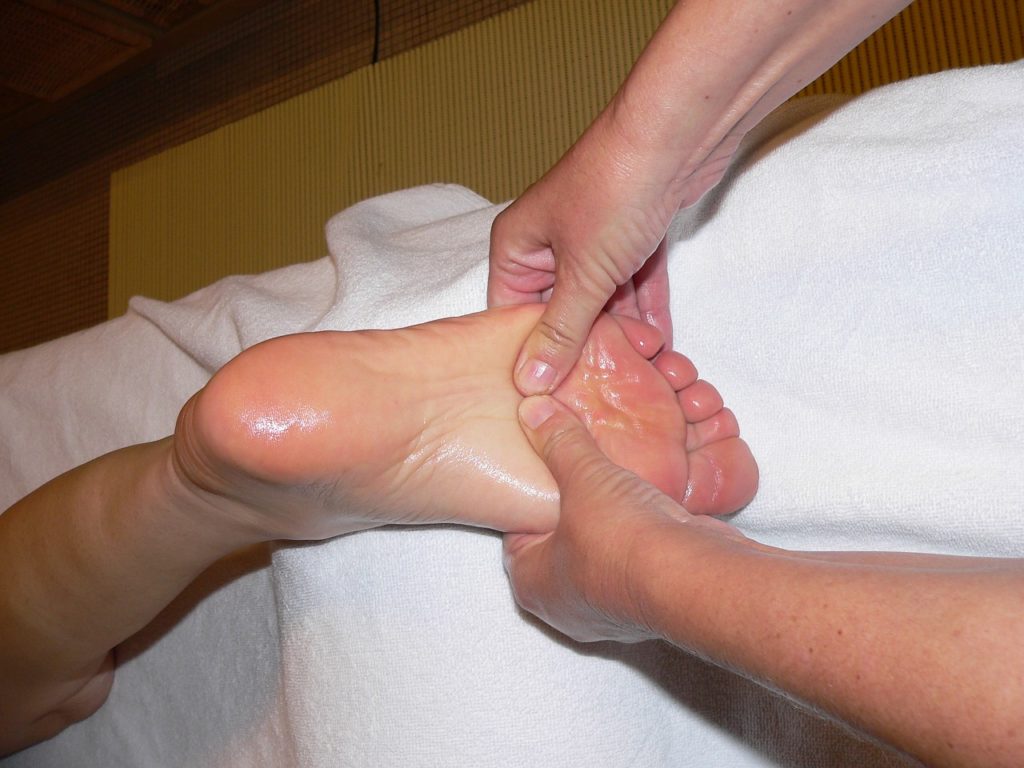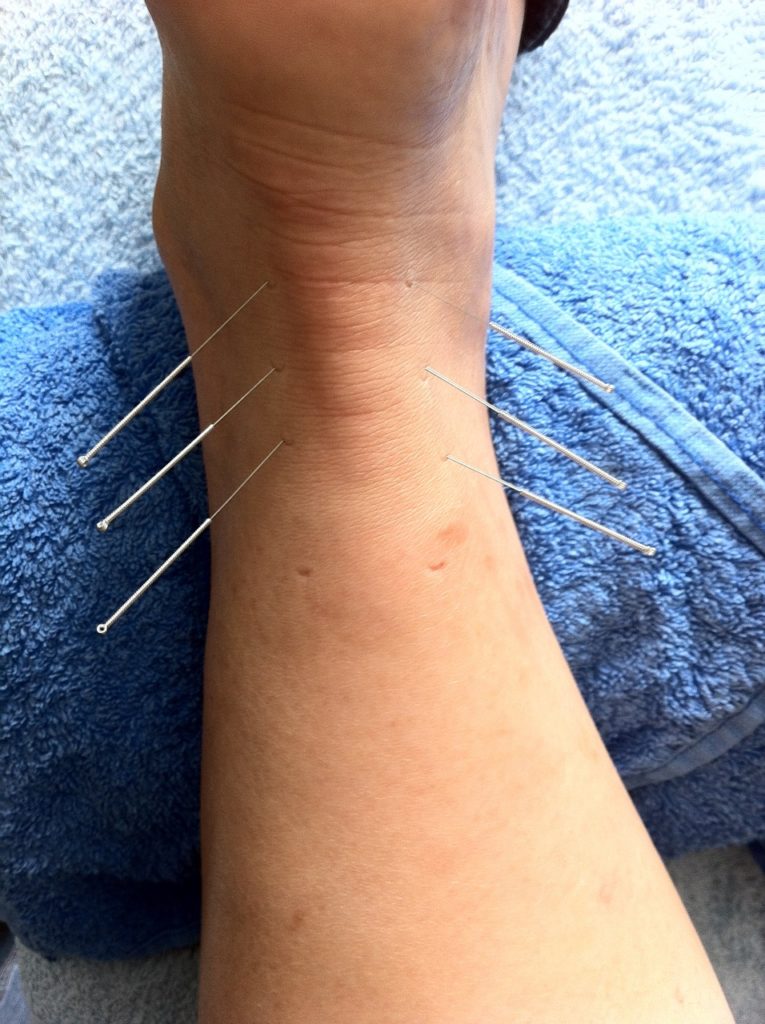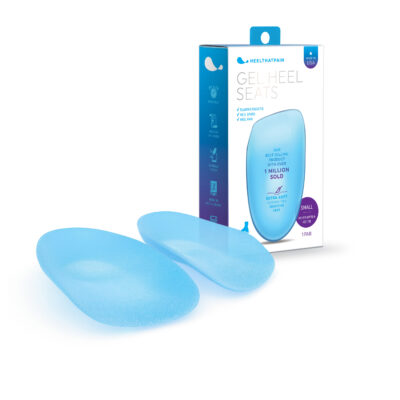 Acupressure versus acupuncture–what’s the difference, how does each one work, and which one is more effective for plantar fasciitis?
Acupressure versus acupuncture–what’s the difference, how does each one work, and which one is more effective for plantar fasciitis?
These two words sound alike for a reason. Both are rooted in the prefix “Acu,” which means targeted. And both pinpoint heel pain caused by plantar fasciitis. Acupressure–as you have probably guessed–combats heel pain through targeted pressure to different areas of the heel, while acupuncture treats heel pain through special needles that barely puncture the skin.
Here’s what you need to know about acupuncture and acupressure for heel pain:
How Does Acupuncture Help Heel Pain?
In acupuncture, very tiny needles are quickly inserted shallowly. It’s unclear exactly how this works to reduce pain, but researchers believe that the needle insertion stimulates blood flow and hormones to the affected area, drastically reducing pain. Several studies have shown acupuncture to be an effective method of temporarily reducing the symptoms of heel pain and plantar fasciitis. For example, this study by Dr. Tillu and Dr. Gupta showed that pain was significantly improved after 4 and 6 weeks of acupuncture treatment.
How Does Acupressure Help Heel Pain?

Acupressure works through applying pressure to “hot spots” of the heel and arch that have been negatively affected by plantar fasciitis. This accomplishes two things: first, the pressure to these targeted areas numbs the body’s pain response. Second, constant, targeted pressure through special orthotic inserts that incorporate Fascia-Bar technology lifts the arch so that heel spurs no longer dig into the fatty pad of the heel (a primary cause of pain from plantar fasciitis.)
Benefits and Drawbacks of Acupuncture for Plantar Fasciitis

Most of the potential drawbacks to acupuncture for heel pain involve overcoming the perception that acupuncture is painful. While this treatment method does involve needles, it really doesn’t hurt! The other potential downside of acupuncture is that it only treats symptoms–not the cause–of plantar fasciitis. To eliminate symptoms for good, it’s necessary to treat the damage to the plantar fascia.
- Effectiveness: A compelling number of studies indicate that acupuncture is very effective at treating the symptoms of plantar fasciitis. However, acupuncture does not treat the root cause of plantar fasciitis.
- Cost: The cost of acupuncture varies by location and facility, but as a general rule, an intake visit will cost somewhere in the neighborhood of $75, while an ongoing series of visits will be closer to $50.
- Pain Level: Surprisingly, acupuncture isn’t painful. If you do experience pain or discomfort, let the physician know immediately!
Benefits and Drawbacks of Acupressure for Plantar Fasciitis
The biggest drawback to acupressure is finding an orthotic that fits the bill. Most orthotics provide cushioning–important for painful heels–but that’s the end of the story. For effective acupressure, it’s critical to use an orthotic that uses Fascia-Bar technology, which was developed specifically to treat plantar fasciitis and heel spurs. Unlike many treatments for plantar fasciitis (including acupuncture), acupressure focuses on treating the root cause of plantar fasciitis by lifting the plantar fascia to a proper height. This both eliminates the pain from heel spurs, and applies pain-relieving pressure to targeted areas.
- Effectiveness: A double blind clinical study conducted by the University of Iowa concluded that Fascia-Bar technology is twice times as effective at treating heel pain than comparable leading brand orthotics. Patients who use orthotics with Fascia-Bar technology report a remarkable satisfaction rate of more than 90%.
- Cost: Orthotics with Fascia-Bar technology can be purchased for less than $20, and can be washed and reworn.
- Pain Level: While it’s recommended that you ease into wearing orthotics by gradually increasing the amount of time you spend wearing them each day, you shouldn’t experience any pain.
So, Is Acupressure or Acupuncture Better for Heel Pain?
Both acupressure and acupuncture have compelling benefits, and the good news is that you don’t have to choose! These treatments can be used in tandem to provide pain relief from symptoms, depending on your budget and preferences.
While it’s important to treat the root cause of plantar fasciitis to avoid an endless loop of treating symptoms without addressing the underlying issue, any reasonably priced, safe, non-invasive treatment that effectively alleviates pain is a good option!




I just subscribed I have severe plantar fasciitis and extremely high archs and a heel spur.. it’s almost impossible to walk anymore or stand on my left foot I’m having to use a cane I’m praying this book will help me I go to acupuncture and acupressure and it’s not relieving I’ve also had cortisone injections.